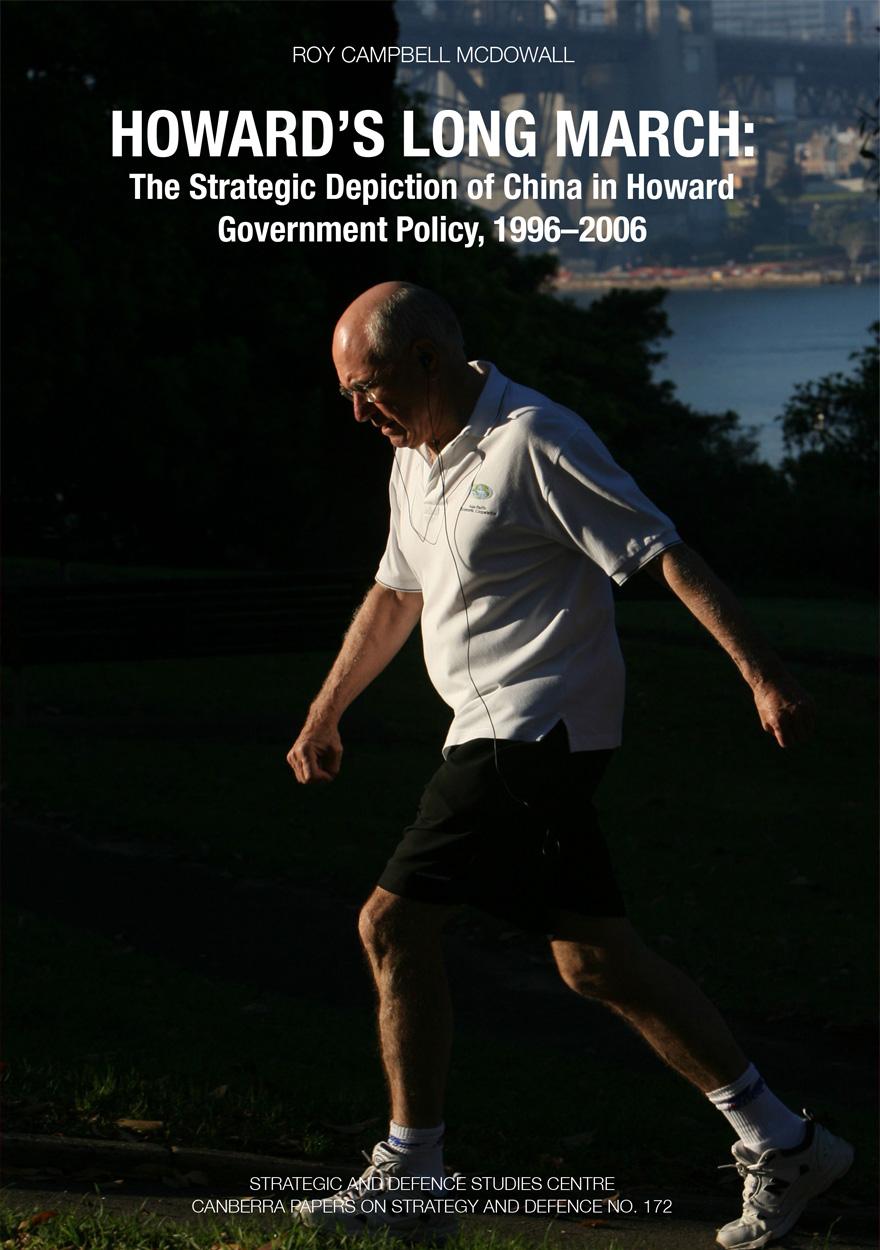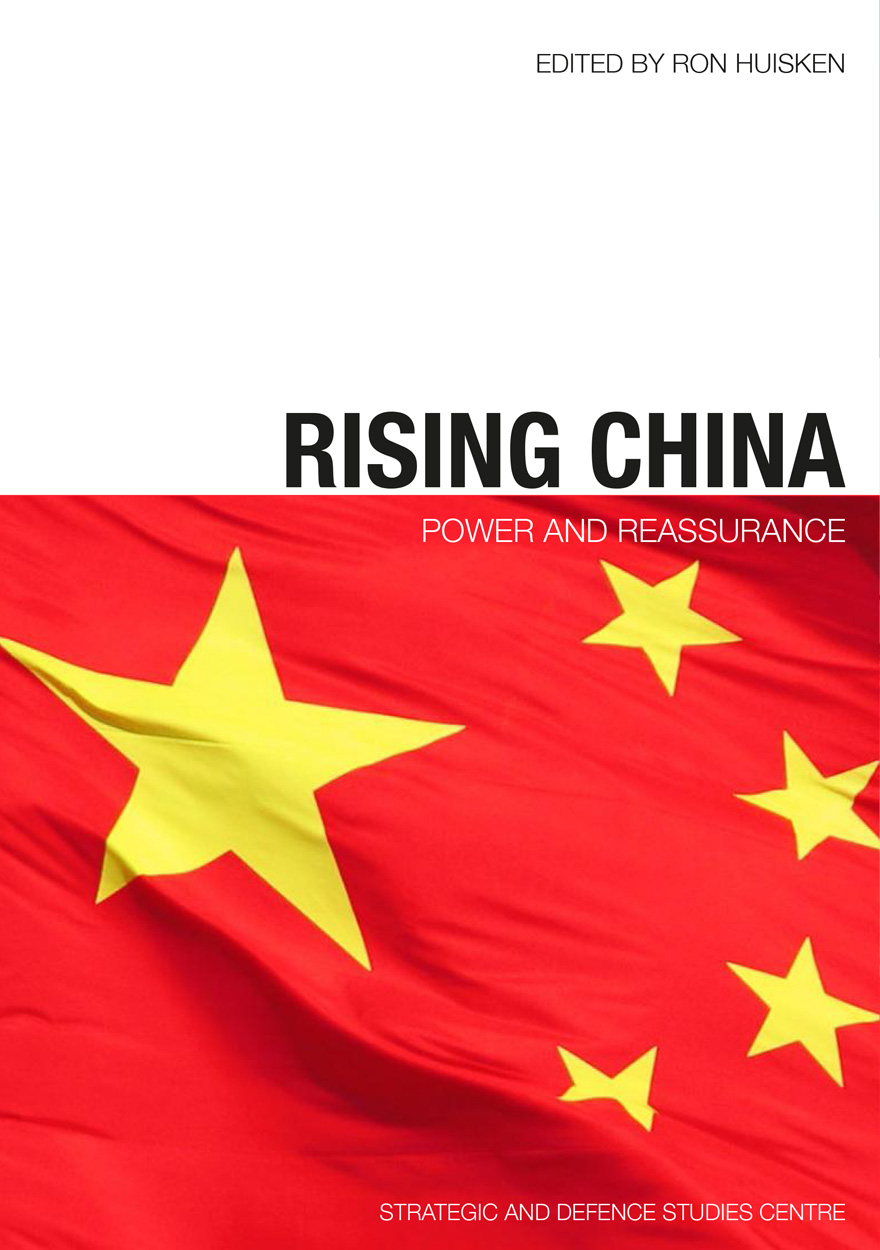Search titles
Displaying results 41 to 50 of 52.

The Architecture of Security in the Asia-Pacific »
Edited by: Ron Huisken
Publication date: October 2009
We cannot expect in East Asia over the foreseeable future to see the sort of conflation of sovereign states that has occurred in Europe. We must anticipate that, for the foreseeable future, the requirement will be for the sensible management and containment of competitive instincts.
The establishment of a multilateral security body in East Asia that includes all the key players, and which the major powers invest with the authority to tackle the shaping of the regional security order, remains a critical piece of unfinished business.

Timing is Everything »
The Politics and Processes of New Zealand Defence Acquisition Decision Making
Authored by: Peter Greener
Publication date: October 2009
This book identifies the critical factors that shaped and influenced New Zealand’s defence acquisition decision-making processes from the election of the Fourth Labour Government in 1984 and the subsequent ANZUS crisis, through to the 11 September 2001 terrorist attacks on the United States and the following ‘war on terror’. It explores and analyses decision-making processes in relation to the ANZAC frigates, the military sealift ship HMNZS Charles Upham, the F-16 strike aircraft, the P-3C Orion maritime patrol aircraft upgrade, and the LAV IIIs.

Critical Reflections on Australian Public Policy »
Selected Essays
Edited by: John Wanna
Publication date: May 2009
This collection of ‘critical reflections’ on Australian public policy offers a valuable contribution to public discussion of important political and policy issues facing our nation and society. These essays are important not only because of the reputation and position of the various contributors, but because they are incredibly ‘content rich’ and brimming with new ideas.

Howard's Long March »
The Strategic Depiction of China in Howard Government Policy, 1996–2006
Authored by: Roy Campbell McDowall
Publication date: March 2009
Australia’s strategic depiction of China has assumed increased importance as it attempts to harmonise economic interests (focusing on China) with security interests (primarily the United States). In this period of strategic transition, how Australia incorporates the rise of China into its existing security commitment under ANZUS has become a delicate issue. This investigation follows the intriguing evolution of the Howard Government’s depictions of China, and reveals a complex and calculated strategy that successfully transformed a potentially volatile conflict of interests into a functional foreign policy.

Rising China »
Power and Reassurance
Edited by: Ron Huisken
Publication date: March 2009
Asia looks and feels very different now compared to the days of the Cold War. The sense that Asia now works differently can be traced to a single source – the re-emergence of China. China was the dominant power in greater Asia for most of recorded history. This historical norm was interrupted from the early 19th century, too far into the past to be recognisable and readily accommodated by the actors in today’s international arena. A powerful China feels new and unfamiliar.
Arriving peacefully at mutually acceptable relationships of power and influence that are very different from those that have prevailed for the past half century will be a demanding process. The world’s track record on challenges of this kind is not terrific. It will call for statesmanship of a consistently high order from all the major players, and building the strongest possible confidence among these players that there are no hidden agendas.

Struggling for Self Reliance »
Four case studies of Australian Regional Force Projection in the late 1980s and the 1990s
Authored by: Bob Breen
Publication date: October 2008
Military force projection is the self-reliant capacity to strike from mainland ports, bases and airfields to protect Australia’s sovereignty as well as more distant national interests.
Force projection is not just a flex of military muscle in times of emergency or the act of dispatching forces. It is a cycle of force preparation, command, deployment, protection, employment, sustainment, rotation, redeployment and reconstitution. If the Australian Defence Force consistently gets this cycle wrong, then there is something wrong with Australia’s defence.
This monograph is a force projection audit of four Australian regional force projections in the late 1980s and the 1990s—valid measures of competence. It concludes that Australia is running out of luck and time.
The Rudd Government has commissioned a new Defence White paper. This monograph is Exhibit A for change.

Remembering Hedley »
Edited by: Coral Bell, Meredith Thatcher
Publication date: August 2008
Remembering Hedley commemorates the life of Hedley Bull (1932–85), a pivotal figure in the fields of international relations and strategic studies. Its publication coincides with the official opening on 6 August 2008 of the Hedley Bull Centre at The Australian National University in Canberra.

Australia and Cyber-warfare »
Authored by: Gary Waters, Desmond Ball, Ian Dudgeon
Publication date: July 2008
This book explores Australia’s prospective cyber-warfare requirements and challenges. It describes the current state of planning and thinking within the Australian Defence Force with respect to Network Centric Warfare, and discusses the vulnerabilities that accompany the use by Defence of the National Information Infrastructure (NII), as well as Defence’s responsibility for the protection of the NII. It notes the multitude of agencies concerned in various ways with information security, and argues that mechanisms are required to enhance coordination between them. It also argues that Australia has been laggard with respect to the development of offensive cyber-warfare plans and capabilities. Finally, it proposes the establishment of an Australian Cyber-warfare Centre responsible for the planning and conduct of both the defensive and offensive dimensions of cyber-warfare, for developing doctrine and operational concepts, and for identifying new capability requirements. It argues that the matter is urgent in order to ensure that Australia will have the necessary capabilities for conducting technically and strategically sophisticated cyber-warfare activities by the 2020s.
The Foreword has been contributed by Professor Kim C. Beazley, former Minister for Defence (1984–90), who describes it as ‘a timely book which transcends old debates on priorities for the defence of Australia or forward commitments, [and] debates about globalism and regionalism’, and as ‘an invaluable compendium’ to the current process of refining the strategic guidance for Australia’s future defence policies and capabilities.

Defence Policy-Making »
A Close-Up View, 1950-1980- A Personal Memoir
Edited by: Peter Edwards
Authored by: Sir Arthur Tange
Publication date: July 2008
Sir Arthur Tange was perhaps the most powerful Secretary of the Australian Defence Department and one of the most powerful of the great ‘mandarins’ who dominated the Commonwealth Public Service between the 1940s and the 1970s. His strong, and often decisive, influence on both administration and policy was exerted by virtue of his intellectual capacity, his administrative ability and the sheer force of his personality.
Controversies from his time in Defence, including those associated with ‘the Tange report’ and ‘the Tange reforms’, echo to this day, and it is still easy to identify both staunch admirers and vitriolic critics in defence and public service circles. Tange wrote this account in his last years. It is a memoir – based largely on memory supplemented by limited reference to documentary material – that focuses upon his career after he came to Defence in 1970. It records his own account of his part in those administrative reforms and policy shifts, as well as his involvement-or non-involvement or alleged involvement-in several of the political crises of the 1970s, including the downfall of John Gorton as Prime Minister and the dismissal of the Whitlam Government.

History as Policy »
Framing the debate on the future of Australia’s defence policy
Edited by: Ron Huisken, Meredith Thatcher
Publication date: December 2007
The fortieth anniversary of the Strategic and Defence Studies Centre’s founding provided the opportunity to assemble many of Australia’s leading analysts and commentators to review some of the more significant issues that should define Australian defence policy.
In the first 20 years after its establishment, SDSC scholars played a prominent role in shaping the ideas and aspirations that eventually found official expression in the 1987 Defence of Australia White Paper. This policy sustained a coherent balance between strategy, force structure and budgets for well over a decade. In recent years, however, the cumulative effects of the end of the Cold War and watershed events like the East Timor experience; the attacks on New York and Washington, D.C., in September 2001; the Bali bombings in October 2002; and the invasion of Iraq in March 2003 have fractured the former consensus on defence policy. These developments have eroded acceptance of the core judgements underpinning defence policy. This has led to a more tenuous connection between some recent major equipment acquisitions and declared policy.
The unravelling of the consensus on the ‘defence of Australia’ policy means that we must again undertake a balanced, long-term assessment of the nature of Australia’s strategic interests. Only by doing so can we determine the kinds of armed forces that would contribute most effectively to protecting those interests. The papers collected in this volume are not informed by a common view of where Australia should focus its defence policy, but all address themes that should figure prominently in this difficult but essential task.



